This article contains some spoilers for Mission: Impossible – Dead Reckoning Part One in its discussion of how the movie reflects the crusade of Tom Cruise to save Hollywood.
In Mission: Impossible – Dead Reckoning Part One, only superspy Ethan Hunt can save the world and only superstar Tom Cruise can save Hollywood.
Despite the promise of scale and spectacle, the most important scenes in Dead Reckoning often involve the characters sitting around and talking. These sequences have the feeling of heightened theater, stock spy movie sequences layered with meaning and subtext that give them extra charge. One such sequence involves a number of interested individuals assembled at an exclusive party in Venice to bid over the MacGuffin — in this film a key — that drives so much of the movie’s plot.
The villain of Dead Reckoning is an artificial intelligence, an “algorithm” that has become “sentient” and has been named “the Entity.” This organism is a threat to the security of the world. It is able to infiltrate any network on the planet, to distort reality around it, and to manipulate human beings into serving its purpose. The festivity in Venice has been organized by the Entity itself. “In fact,” boasts the villainous Gabriel (Esai Morales), “you could say that this party is that interested party.”
Ethan Hunt (Cruise) has found himself in hostile territory, trapped in a bidding war with Gabriel for control of the key. The auction is being held by Alanna Mitsopolis (Vanessa Kirby), who has no real understanding of the power that she holds. She doesn’t know what the key unlocks. Ethan desperately tries to convince her to side with him, while Gabriel manipulates her with talk about the sophistication and unstoppable power of the algorithm.
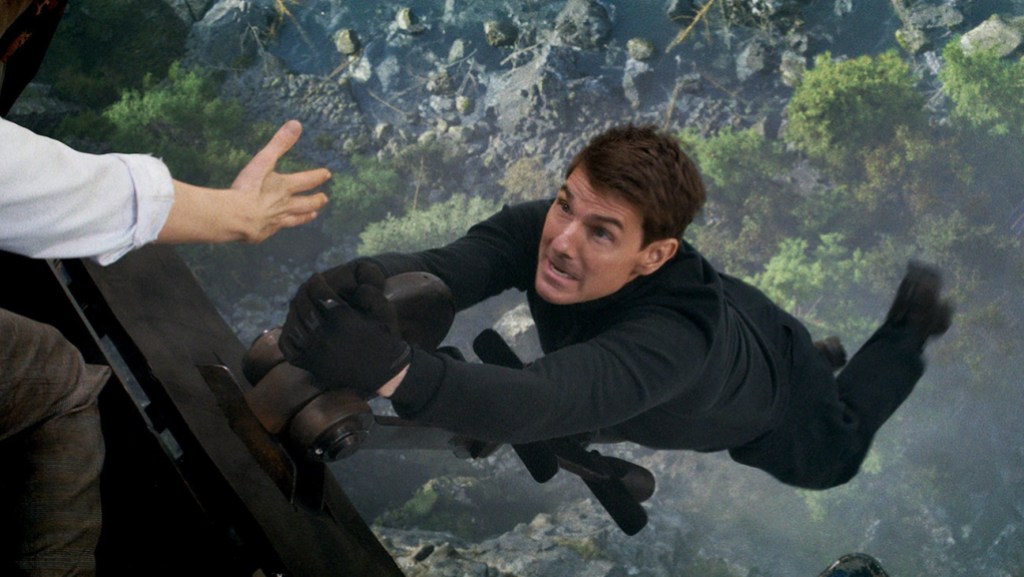
This is a fairly standard spy movie sequence. There are plenty of similar scenes involving black market deals in the other Mission: Impossible movies, to the point that Alanna is the daughter of the arms dealer Max (Vanessa Redgrave) from the first film in the franchise. However, there’s also something deeper underpinning this sequence, which sits at the heart of the movie. There is a sense in which this scene feels particularly charged outside the narrative of the film.
French director Jacques Rivette once argued that “every film is a documentary of its own making,” and that is particularly true when it comes to Tom Cruise, a movie star who exerts a gravity on all of his projects. The boundaries between Cruise and his characters, particularly Hunt, tend to blur. Footage of Tom Cruise breaking his ankle made it into Mission: Impossible – Fallout as Ethan Hunt leaping across a building. As co-star Simon Pegg puts it, “Tom Cruise is Ethan Hunt.”
As such, that shadow auction recalls the news reports about the state of modern Hollywood, as the film industry struggles with the challenges of the streaming age. Dead Reckoning is fundamentally a story about technology run amok. As the Entity amasses power, the protagonists are forced to go increasingly “analog,” to hide from the future. CIA director Eugene Kittridge (Henry Czerny) sets up a headquarters with old film canisters and cathode-ray tubes to keep the Entity out.
The Entity threatens to completely destroy the established world order. Of course, this works as a metaphor for forces outside of the film industry. There are legitimate concerns about the destructive potential of artificial intelligence, which is rapidly evolving and growing. It will have profound implications on politics, economics, warfare, and social trust. These threats are articulated in an early briefing with Denlinger (Cary Elwes), the director of National Intelligence.
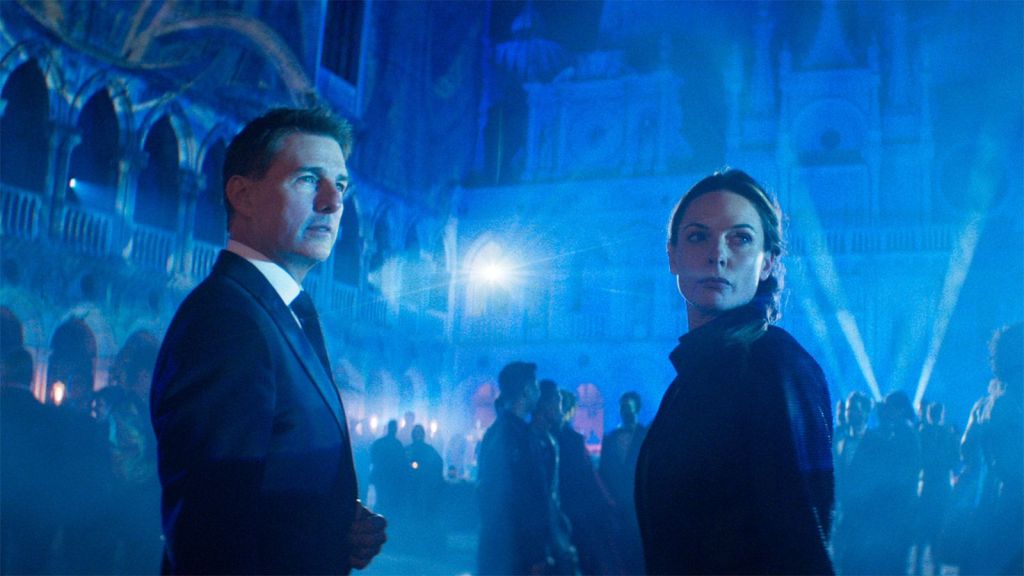
Dead Reckoning presents artificial intelligence as a demonic force. One analyst (Rob Delaney) describes it as “godless,” while Ilsa Faust (Rebecca Ferguson) refers to Gabriel as the organism’s “dark messiah.” While describing this antagonistic force as “the Entity” certainly has supernatural connotations, it is also identified as an “infernal machine.” The only hope of destroying it lies in a woman named Grace (Hayley Atwell) and a cruciform key, composed of two interlocking crucifixes. It is literally an unholy threat.
However, Dead Reckoning filters this through something that feels more finely attuned to Cruise’s status as a movie star. The Mission: Impossible films have always, to some extent, been about movie-making. These spies are obsessed with masks, stunts, and even constructed sets. They can often seem more like a stunt crew or a special effects team than a group of elite international spies. They love their theatrical reveals, while Hunt is a skilled practitioner of close-up magic.
So the threat that the Entity poses to Hunt and his team is often framed in ways that relate to movie-making and movie stardom. It erases Gabriel from security footage at Abu Dhabi Airport, with the only trace of him remaining in a tiny reflection. It taunts Hunt using a simulated copy of the voice of Benji Dunn (Pegg), a reminder of the threat that such machine learning-generated “deepfakes” pose to a profession that profits from controlling likeness rights.
Intelligence veterans like Kittridge and Denlinger seek to exploit the Entity for their own gain, believing that they can control it to further their interests, like the Hollywood executives who want to use artificial intelligence to greenlight projects or write scripts. Dead Reckoning is a movie about Cruise grappling with the potential obsolescence of the way he makes movies, a metaphor that recalls the looming threat of “the Drone Ranger” (Ed Harris) in Top Gun: Maverick, the fear that his “kind are heading toward extinction” in a changing industry.
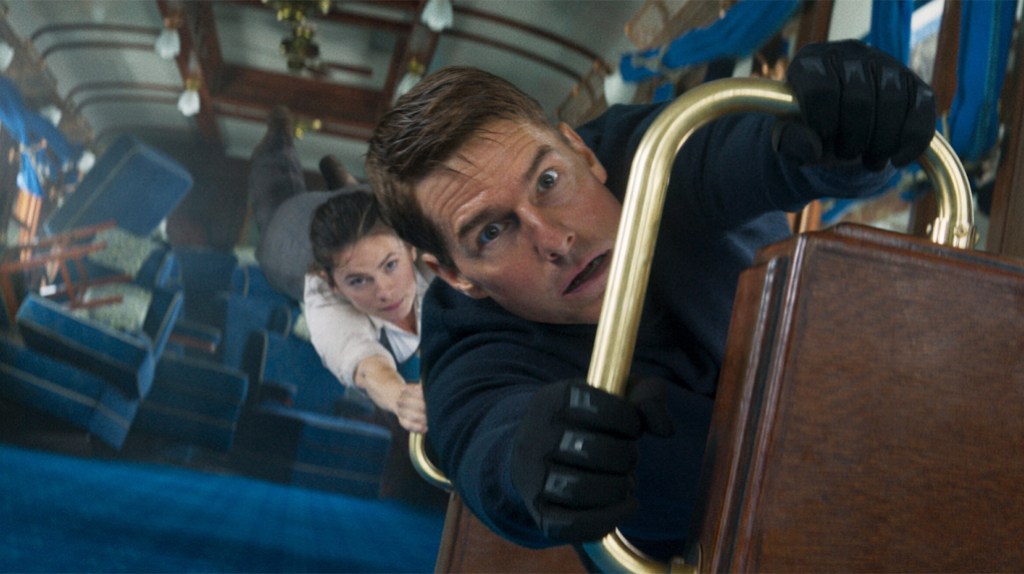
So much of Dead Reckoning is built around power players trying to negotiate with the Entity, hoping to strike a deal with it in the hope of securing some temporary advantage. As various characters point out, Hunt is the only person in the middle of all this who understands that it is folly to bargain with the Entity. Hunt understands the existential threat that this advancement poses. As officials, bureaucrats, zealots, and private actors shuffle around him, Hunt retains clarity of focus.
With this reading in mind, that Venice meeting takes on a new meaning. It is an attempt by the old world order to strike a deal with an ascendant power. It feels very much like a dramatization of the meetings that Cruise and his creative partners would have attended when Paramount briefly considered selling Top Gun: Maverick to a tech-giant streaming service like Apple or Netflix. Cruise was against a direct-to-stream launch, remarking at the Cannes premiere, “That’s not going to happen. Ever.”
Of course, it did happen, just not to Maverick. During the pandemic, Paramount made deals with the streaming services, selling The Lovebirds and The Trial of the Chicago 7 to Netflix and Coming 2 America and Without Remorse to Amazon. Cruise has fought (and won) several internal battles at Paramount over streaming, stopping attempts to turn his projects like Days of Thunder and Mission: Impossible into streaming series, as Paramount had done with American Gigolo or Fatal Attraction.
It seems fair to suggest that the streaming revolution has been a disaster for all involved, especially the studios. Studios like Warners, Disney, and Paramount have found themselves in the position where they are not only scaling back on their production of streaming content, but purging movies and shows from their streaming platforms in an effort to cut losses. Disney cut 7,000 jobs as part of its effort to plug the hole left by the massive losses it accrued on Disney+. Denlinger’s attempts to negotiate with the Entity are similarly fruitless.
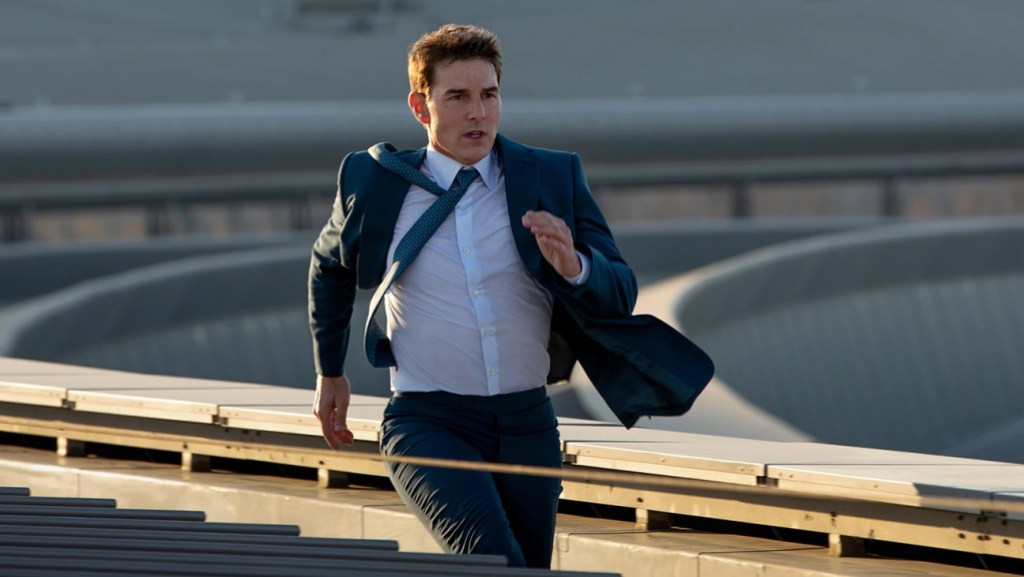
As the industry made a series of catastrophic decisions, Cruise made the right choice. Top Gun: Maverick went on to be the second highest-grossing movie worldwide and the highest-grossing movie domestically of 2022. It spawned legions of “movies are back!” think pieces. It even helped restore Paramount’s fortunes as studios like Warner Bros. floundered by betting on streaming. Like a government functionary in a Mission: Impossible film, Hollywood was foolish to bet against Cruise.
Cruise is and always has been an advocate for filmmaking as an industry and the theatrical market, to the point that he filmed himself attending Tenet during the pandemic. There is a sense that Cruise sees himself as something of a savior for an industry that is struggling. Famously, leaked audio from the production of Dead Reckoning found the actor yelling at the crew for not taking COVID restrictions seriously enough. “Movies are going because of us,” he warned the workers. “If we shut down it’s going to cost people fucking jobs, their home, their family. That’s what’s happening.”
There is some hubris in this. After all, the various COVID shutdowns caused the budget of Dead Reckoning to balloon to $291 million. Many of this year’s blockbusters have struggled because of their massively inflated price tags. There is also only so much that Cruise can do as one movie star. He cannot singlehandedly alter the trajectory of the industry away from its embrace of inherently self-destructive business models. Still, there is something to be said for making the attempt.
On some level, Dead Reckoning understands the odds are against it. Even though Cruise would be hesitant to admit it, there have clearly been some compromises. Most obviously, Dead Reckoning is — like Fast X and Spider-Man: Across the Spider-Verse before it — not a self-contained movie in a traditional sense; it is the first half of a larger narrative. It is also, for all the team’s embrace of analog technology, the first Mission: Impossible film to shoot on digital rather than film — on Sony VENICE Cameras, no less.
With Dead Reckoning, Tom Cruise takes it upon himself to save Hollywood from itself as a digital and artificial intelligence-driven future looms. It seems the star might have finally found a truly impossible mission. Perhaps it’s fitting that the movie ends on a cliffhanger.

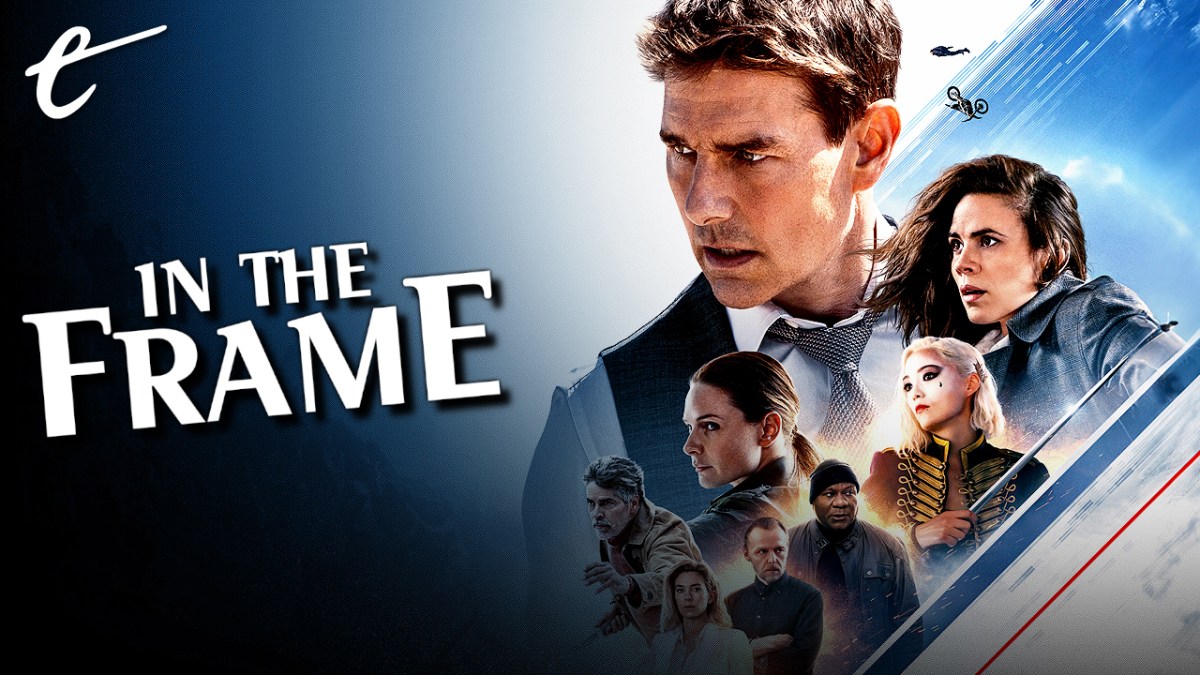




Published: Jul 14, 2023 11:00 am